Mad Hedge Biotech and Healthcare Letter
December 21, 2023
Fiat Lux
Featured Trade:
(UNLEASHING THE UNDERDOGS)
(NVS), (LLY), (PNT), (RYZB), (MRK), (ABBV)

Mad Hedge Biotech and Healthcare Letter
December 21, 2023
Fiat Lux
Featured Trade:
(UNLEASHING THE UNDERDOGS)
(NVS), (LLY), (PNT), (RYZB), (MRK), (ABBV)

Grab your notebooks because class is in session, and today's topic is radiopharmaceuticals.
Yes, you heard it right - radiopharmaceuticals. It’s not your everyday cocktail party topic, but it's certainly the buzzword in the biotech investing world. And let me tell you, the numbers are sizzling.
Venture capital deals in this sector have shot up by an eye-watering 550% to $408 million this year. Back in 2017, this figure was a mere $63 million. Talk about going from zero to hero.
The global market for these radioactive wonders zoomed past $5.2 billion in 2022 and is now racing towards an estimated $13.67 billion by 2032. That's a CAGR of 10.2% for the statisticians among us.
So, what's cooking in the radiopharmaceutical kitchen? Well, a lot, apparently.
Leading the pack are the heavyweights – Novartis (NVS) and Eli Lilly (LLY). Novartis has thrown its hat into the ring, making radiopharmaceuticals a showstopper in its oncology lineup. With stars like Lutathera and Pluvicto, they're not just playing; they're here to dominate.
As for Eli Lilly, they're playing catch-up but with style. They laid down a cool $1.4 billion for Point Biopharma Global — a biotech gem focusing on radioligand therapies. Notably, Point investors are playing hardball, waiting for a Phase 3 reveal.
Meanwhile, Eli Lilly's also buddied up with Mariana Oncology and its $175 million Series B – these guys are eyeing small cell lung cancer with a glint in their eye.
So, what does this mean for the investor universe? Well, in a nutshell, it's party time. Early-stage companies, especially those with their lab coats on in discovery and preclinical stages, are like magnets to investors right now.
There’s POINT Biopharma, which hails from Indianapolis, that went public on Nasdaq as of July 1, 2021. Remember the ticker symbol “PNT”? That's them, and they currently have roughly $1.33 billion in market cap.
Another promising option is Mallinckrodt Pharmaceuticals. These folks are into everything from specialty pharmaceuticals to, you guessed it, radiopharmaceuticals—an American-Irish charm, if I may say so.
Abdera Therapeutics, a Canadian startup (eh!), is also in the running. This company is all about precision radiotherapeutics. They're eyeing small-cell lung cancer, and they've got the funds to back it up.
And then there’s ARTBIO, with an impressive $90 million Series A six months post-launch.
There’s also RayzeBio (RYZB), which is based in sunny California. They're not just turning heads; they're opening wallets. This company raised a whopping $160 million in Series D last year and then sprinted towards a dazzling $311 million IPO just last September.
Between 2018 and 2023, US-based radiopharmaceutical companies attracted a hefty $1.2 billion in venture financing. The peak? A cool $262 million in 2021. And guess what? Most of this dough was for preclinical and discovery shenanigans.
But let's not forget the hurdles, particularly the supply challenges and overwhelming demand. Yet, despite these hiccups, the sector remains hotter than a summer in the Sahara.
Prior to this, ADCs (Antibody Drug Conjugates) dominated the conversation.
We witnessed Merck (MRK) confidently investing $4 billion in Daiichi Sankyo for their ADC prospects. Lilly was busy forming a cozy partnership with Mablink Bioscience. And let's not forget AbbVie (ABBV), which generously splurged $10.1 billion on ImmunoGen's Elahere.
To this day, ADCs are still the talk of the town. But here's the thing: radiotherapeutics might be the underdog next to ADCs, but they're catching up. Fast.
This sector is bubbling with potential, simmering with innovation. For investors and pharma bigwigs, radiopharmaceuticals are more than just a fad. They're the future.
So, what's the takeaway? Radiotherapeutics might not be grabbing the spotlight like ADCs, but they’re like that quiet kid in class who ends up acing the test.
Mark my words. This is one space in oncology that's set to make some serious noise in the coming years.
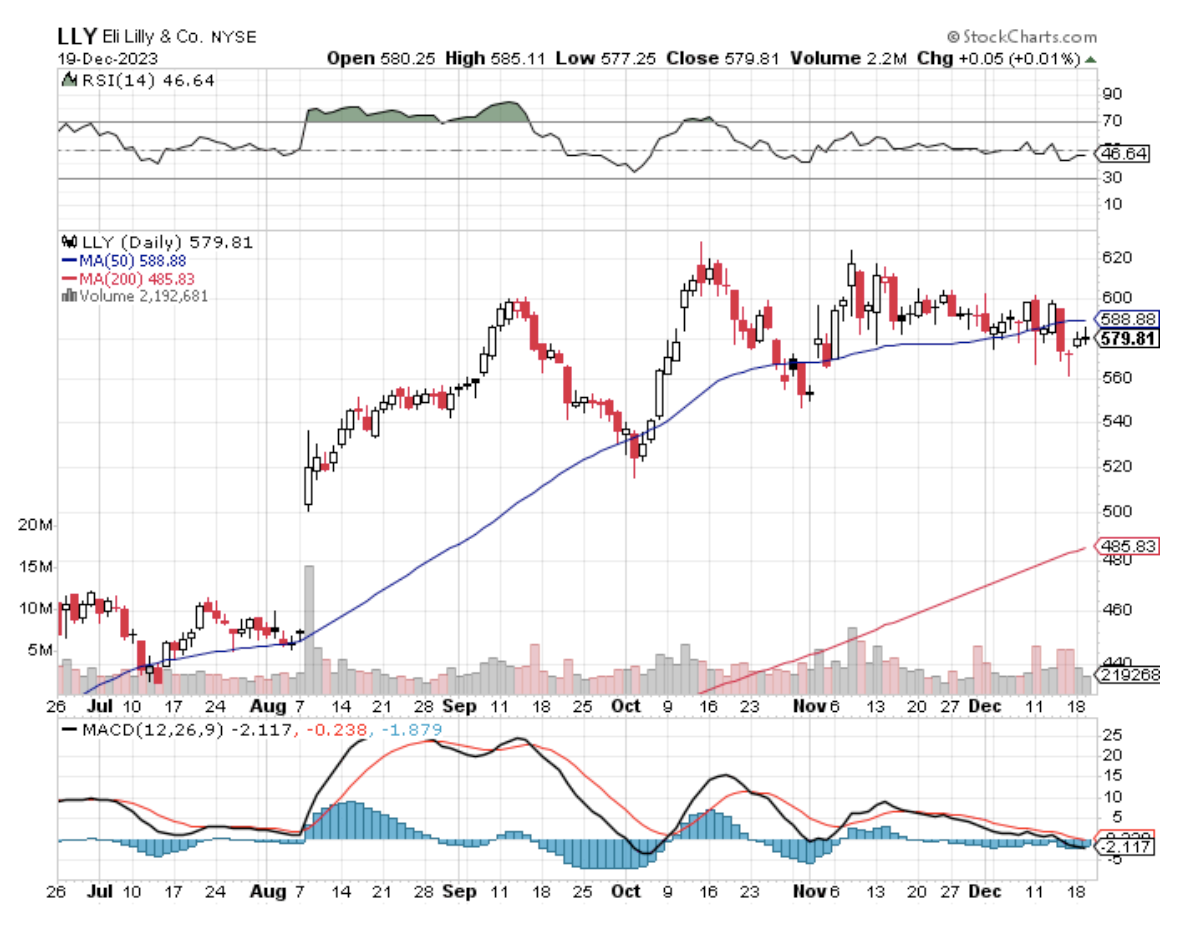
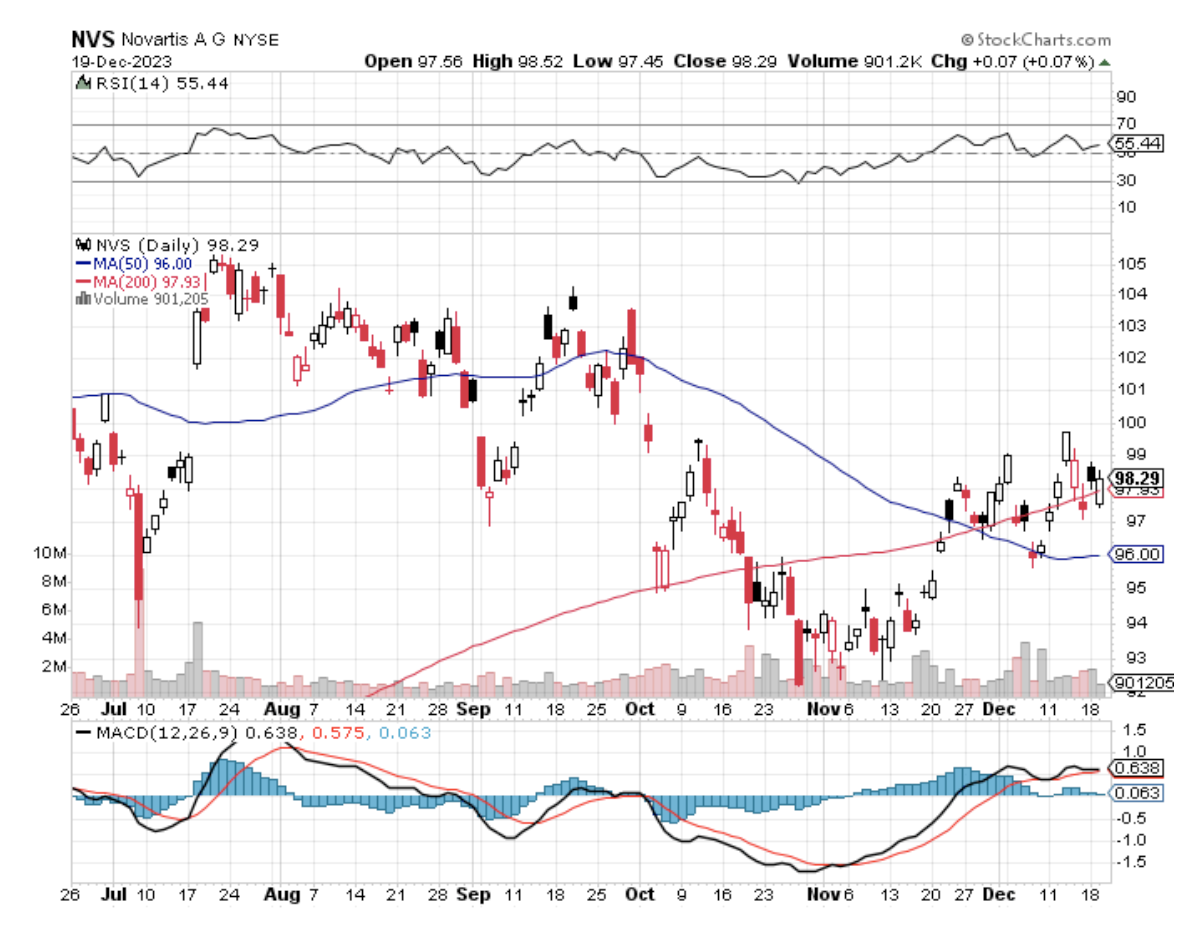
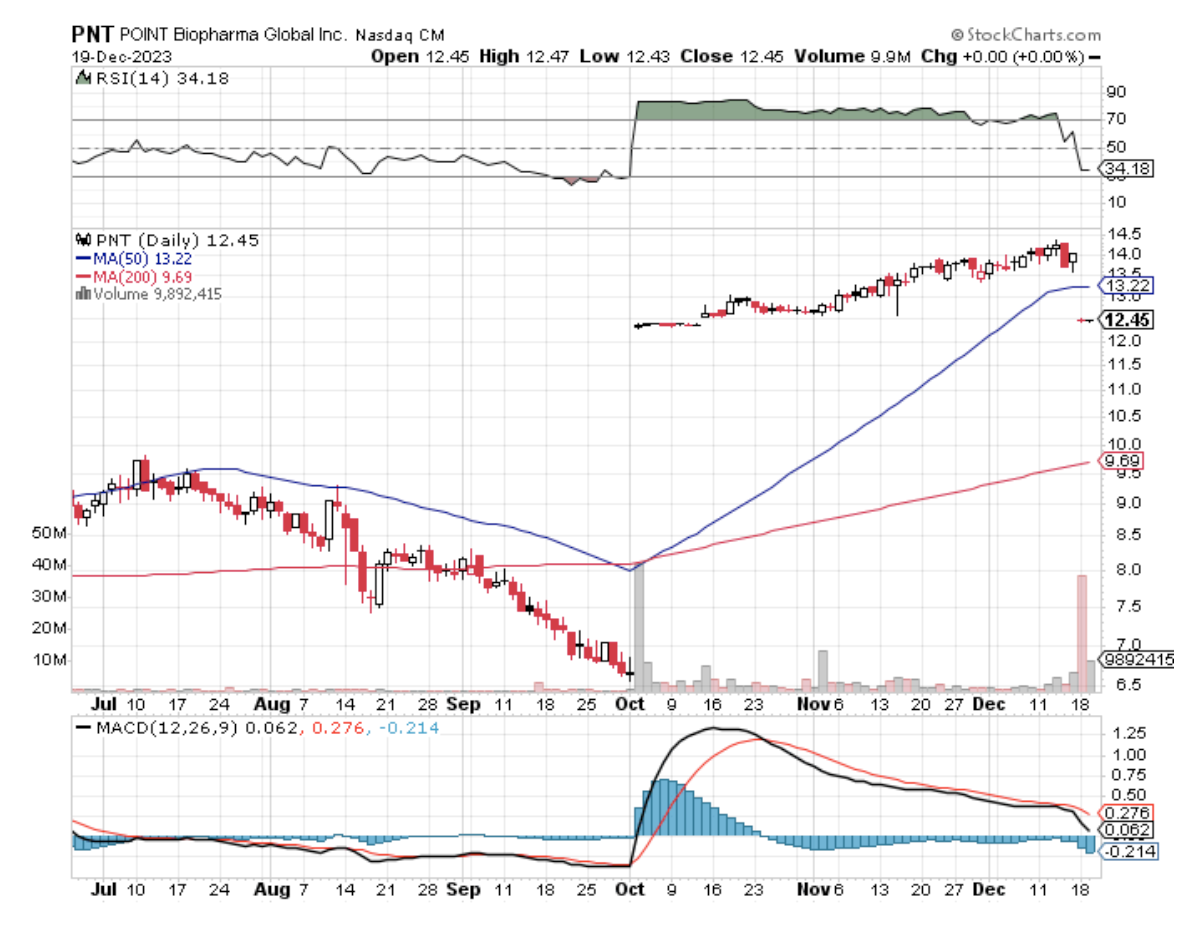
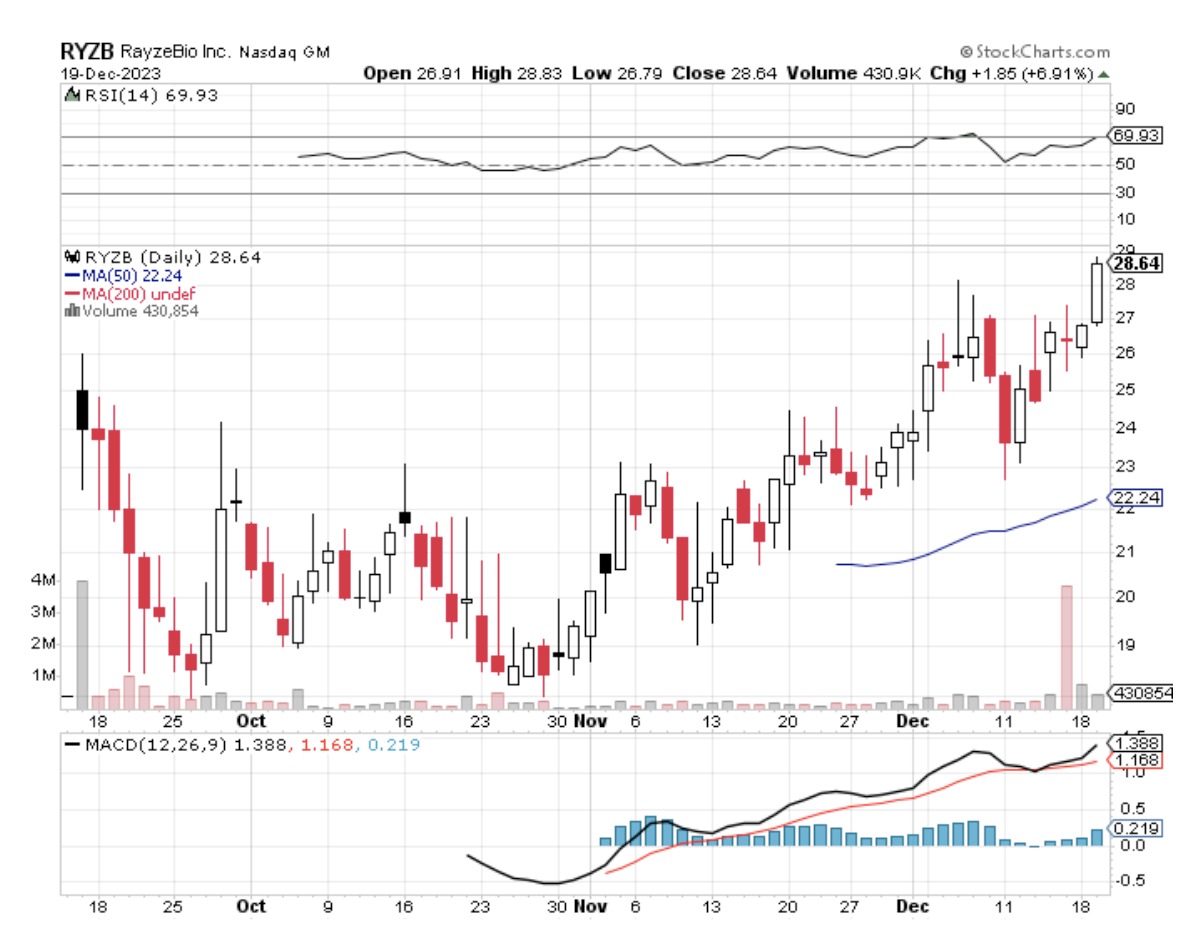
Mad Hedge Biotech and Healthcare Letter
September 19, 2023
Fiat Lux
Featured Trade:
(A SHOT AT HOPE)
(MRNA), (IMTX), (MRK), (PFE), (BMY), (GH), (ILMN), (NVS), (RHHBY), (BGNE), (AZN)

In a quaint Boston lab, as the first rays of dawn broke, a team of scientists, led by Moderna (MRNA), embarked on a mission. Their goal? To craft a solution to one of humanity's most persistent adversaries: cancer.
The grim reality remains that cancer is a leading cause of death in the United States. The statistics are daunting, with over 1.9 million new cases anticipated in 2023 and a projected death toll exceeding 600,000. The financial implications mirror this gravity, with costs expected to soar from $156 billion in 2018 to a staggering $246 billion by 2030.
As the world watched with bated breath, Moderna, already a household name for its COVID-19 vaccine, was silently weaving a narrative that could redefine the future of oncology.
Needless to say, the biotechnology sector, a realm of ceaseless innovation, has been abuzz with Moderna's latest venture. Earlier this month, the biotech announced its agreement with the German drug developer Immatics (IMTX) to develop cancer vaccines and therapies. As part of the deal, Moderna will pay $120 million in cash and will also make additional milestone payments.
This collaboration is not just about the financials; it's a beacon of hope for millions.
The partnership is set to merge Moderna's mRNA technology with Immatics’s T-cell receptor platform, focusing on various therapeutic modalities such as bispecifics, cell therapies, and cancer vaccines. Their combined research aims to leverage mRNA technology for in vivo expression of Immatics's half-life extended TCR bispecifics targeting cancer-specific HLA-presented peptides, among other innovative approaches.
With an upfront investment of $120 million, Moderna has made it clear: they're in it to win it. And the stakes? Potentially life-changing cancer vaccines.
However, this isn’t Moderna’s first foray into the realm of cancer treatments.
Building on the momentum of the technology of its highly potent COVID-19 shots, Moderna announced a partnership with Merck (MRK) earlier this year, combining their efforts to come up with treatments that can drastically reduce the spread of skin cancer. By leveraging Merck's Keytruda with its own innovative vaccine, Moderna has showcased the potential of such collaborations in advancing cancer treatment.
After all, the global community oncology services market is not just growing; it's clearly thriving.
From $47.95 billion in 2022 to a projected $53.79 billion in 2023, the numbers speak for themselves. By 2027, this figure is set to skyrocket to $81.33 billion. Such exponential growth underscores the immense potential and critical importance of advancements in oncology.
Yet, as expected, Moderna isn't the only player on the field.
Giants like Novartis (NVS) and Roche (RHHBY) have also thrown their hats in the ring, collaborating with known international cancer organizations to democratize access to cancer medicines. Among the myriad of promising stocks these days, though, Moderna, China’s BeiGene, Ltd. (BGNE), and the UK’s AstraZeneca PLC (AZN) shine the brightest.
Other notable contributors to the fight against cancer include Bristol Myers Squibb (BMY), Guardant Health (GH), Illumina (ILMN), and Pfizer (PFE). Their diverse portfolios and relentless pursuit of innovation are set to shape the future of oncology.
But as the curtains draw on this narrative, the spotlight remains firmly on Moderna. Their success with the COVID-19 vaccine has already etched their name in the annals of medical history. With their sights now set on cancer vaccines, the world waits with eager anticipation.
In the grand tapestry of medical advancements, Moderna's endeavors in the cancer vaccine domain promise to be a golden thread. Their journey, fraught with challenges and uncertainties, is proof of human resilience and ingenuity. As investors, we're not left standing on the sidelines watching history unfold; we're granted an active role in it.
The potential of Moderna's innovations in oncology beckons a promising horizon. For those looking to make a mark in the annals of medical investments, this biotech offers a gateway to the future of oncology. Act now, and be part of this groundbreaking narrative.
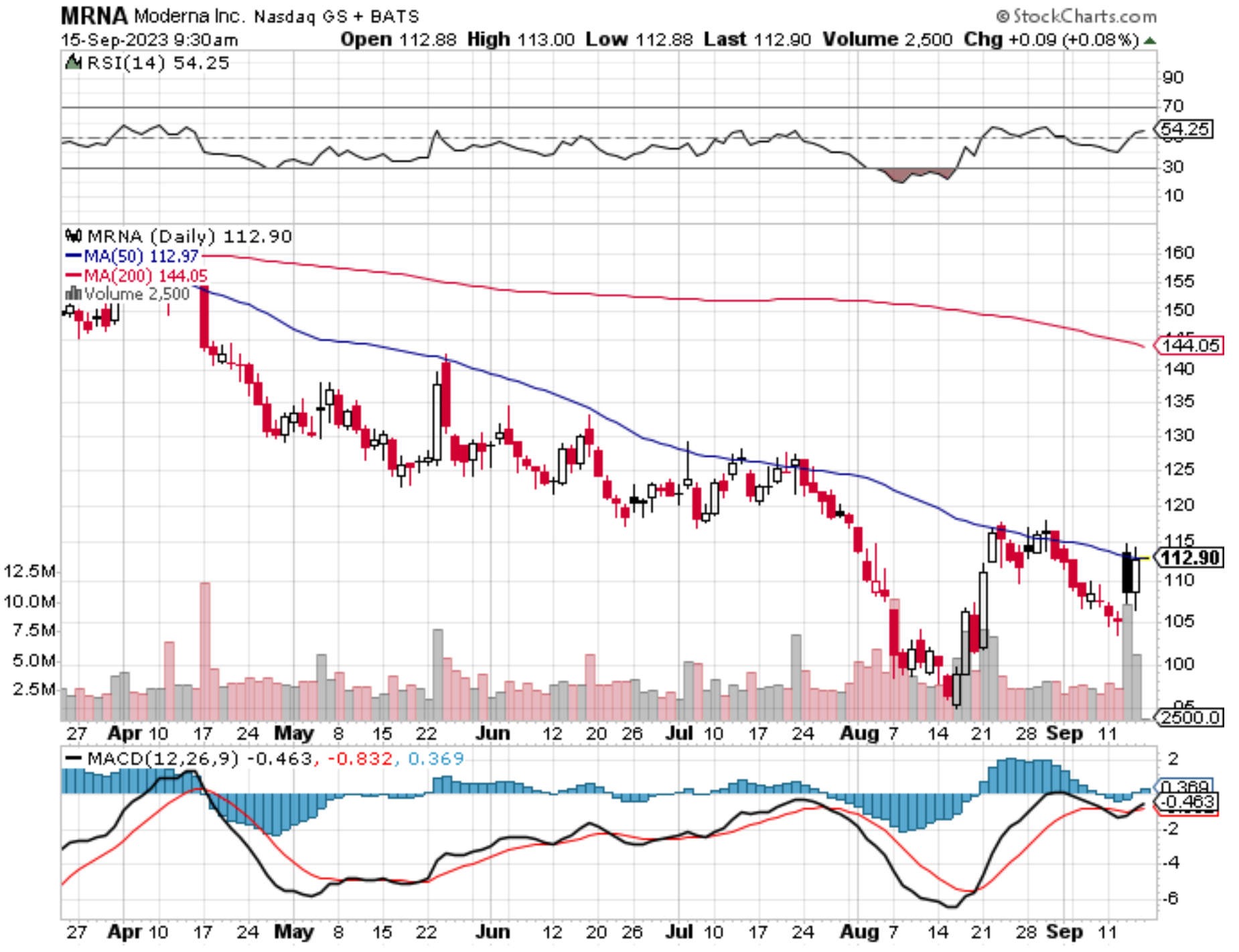
Mad Hedge Biotech and Healthcare Letter
September 14, 2023
Fiat Lux
Featured Trade:
(A PIGGYBACK RIDE TO THE FUTURE)
(BMY), (NVS), (PFE), (MDT), (ABT), (TMO), (HCA), (UHS), (DGX), (LH)

As I walked the sterile, fluorescent-lit hallways of a leading biotechnological institute last summer, I overheard snippets of a conversation that immediately piqued my interest: “human-pig kidney,” “game-changer,” and “investor's goldmine.”
We often think of medical advancements in terms of their immediate patient benefits. Yet, in this chance encounter, the talk of the town was how these breakthroughs could cascade into lucrative opportunities in the stock market.
But how close are we to realizing this future?
Imagine a world where organ shortages, a grim reality for over 106,000 hopeful recipients in the U.S., could become a thing of the past. This isn’t a whimsical daydream but a tangible reality we're inching towards.
The mastermind behind this evolution? Kidneys grown inside pig embryos with a human cell composition ranging between 50% to 70%. This meticulous procedure, entailing 1,820 genetically modified pig embryos transplanted into 13 surrogate mothers, brought forth five specimens that met research criteria.
Switching our perspective, from a purely financial lens, the world of biotechnology is ripe with promise. But with the emergence of this organ transplant technology, investors should sit up and pay attention.
Consider giants like Bristol Myers Squibb (BMY), Novartis AG (NVS), and Pfizer Inc. (PFE). Their R&D teams are burning the midnight oil to roll out immunosuppressive drugs, pivotal for post-transplant procedures. Influenced by such groundbreaking endeavors, their stock trajectory could be a sight to behold in 2023.
Transitioning to medical equipment, Medtronic plc (MDT), Abbott Laboratories (ABT), and Thermo Fisher Scientific Inc. (TMO) aren't just names in the medical devices sphere. They represent the zenith of innovation, manufacturing state-of-the-art equipment integral to organ transplant procedures. If this biotechnological marvel scales, they stand at the precipice of unprecedented growth.
Moving onto healthcare, HCA Healthcare, Inc. (HCA) and Universal Health Services, Inc. (UHS) are the custodians of transplant centers. Their potential upswing is directly proportional to the success of human-pig kidney transplantations. And not to be overlooked, Quest Diagnostics Incorporated (DGX) and LabCorp (LH) are at the heart of organ compatibility diagnostics. As this transplant technology forges ahead, they are poised for a meteoric rise as well.
However, a word of caution is due.
While the financial forecasts appear rosy, any discerning investor is well aware of the need to balance enthusiasm with caution. The stock market's volatile nature, coupled with regulatory shifts and unpredictable research outcomes, can be game-changers. It is extremely crucial to keep your finger on the pulse of the sector and maybe even conduct more in-depth research on the potential of each company before making investment decisions.
Also, beyond finance, it would be remiss not to address the elephant in the room. The melding of human cells into pig embryos has raised eyebrows and ethical concerns. With human cells found in the embryos' brains and spinal cords, it prompts uneasy questions about the potential integration into the pigs' cognitive or reproductive systems. How the scientific community and regulators address these concerns will undoubtedly influence both the pace and direction of research, as well as investor sentiment.
Looking back, my chance encounter in that research institute was an omen of the times to come. On the brink of a scientific revolution, we are witnesses to a watershed moment in healthcare. But for the astute observer, it’s not just about saving lives. It's about understanding how such advancements can recalibrate the entire financial landscape.
To encapsulate the mood, let me leave you with this quote from the infamous Marie Curie: "Nothing in life is to be feared; it is only to be understood. Now is the time to understand more so that we may fear less.”
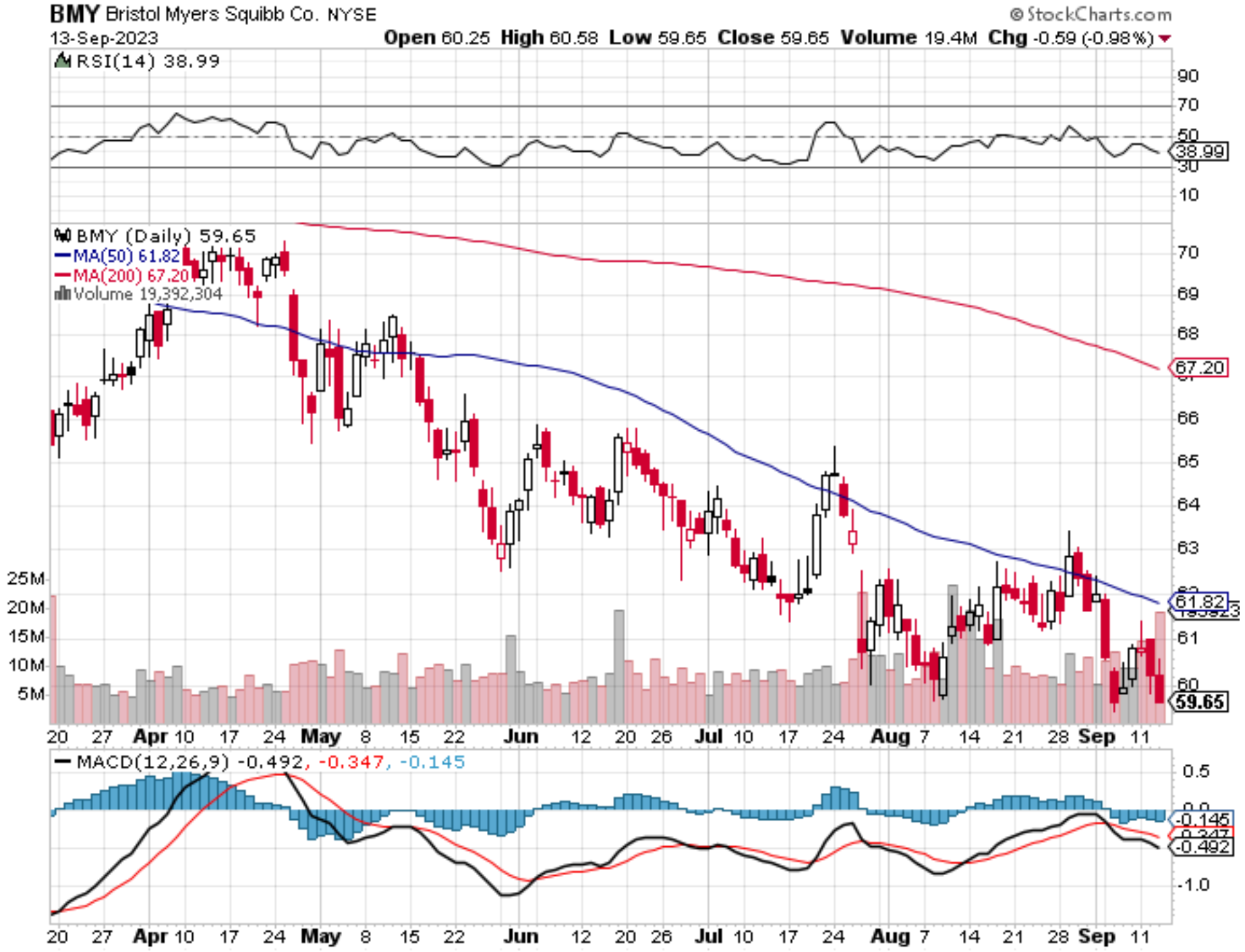
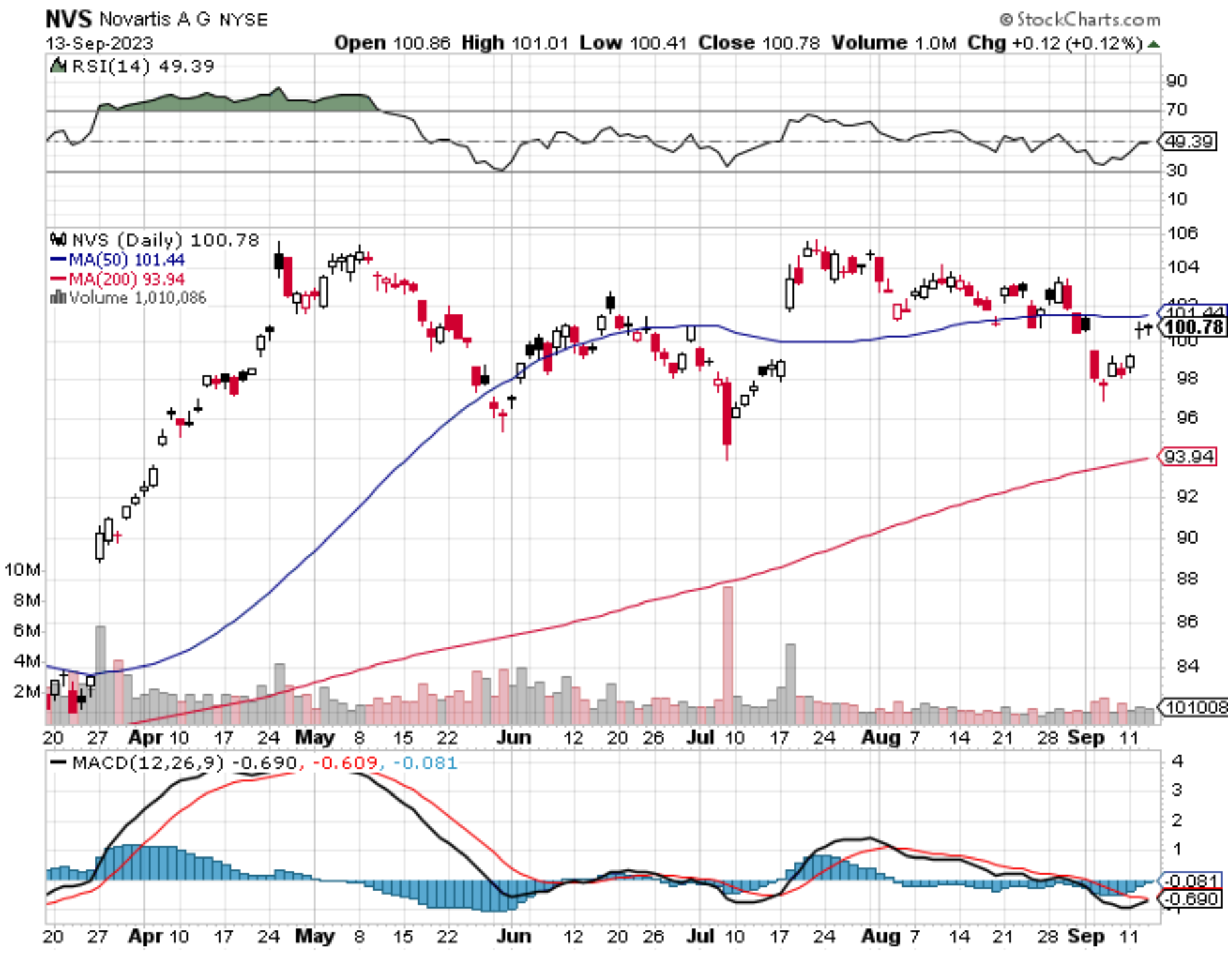

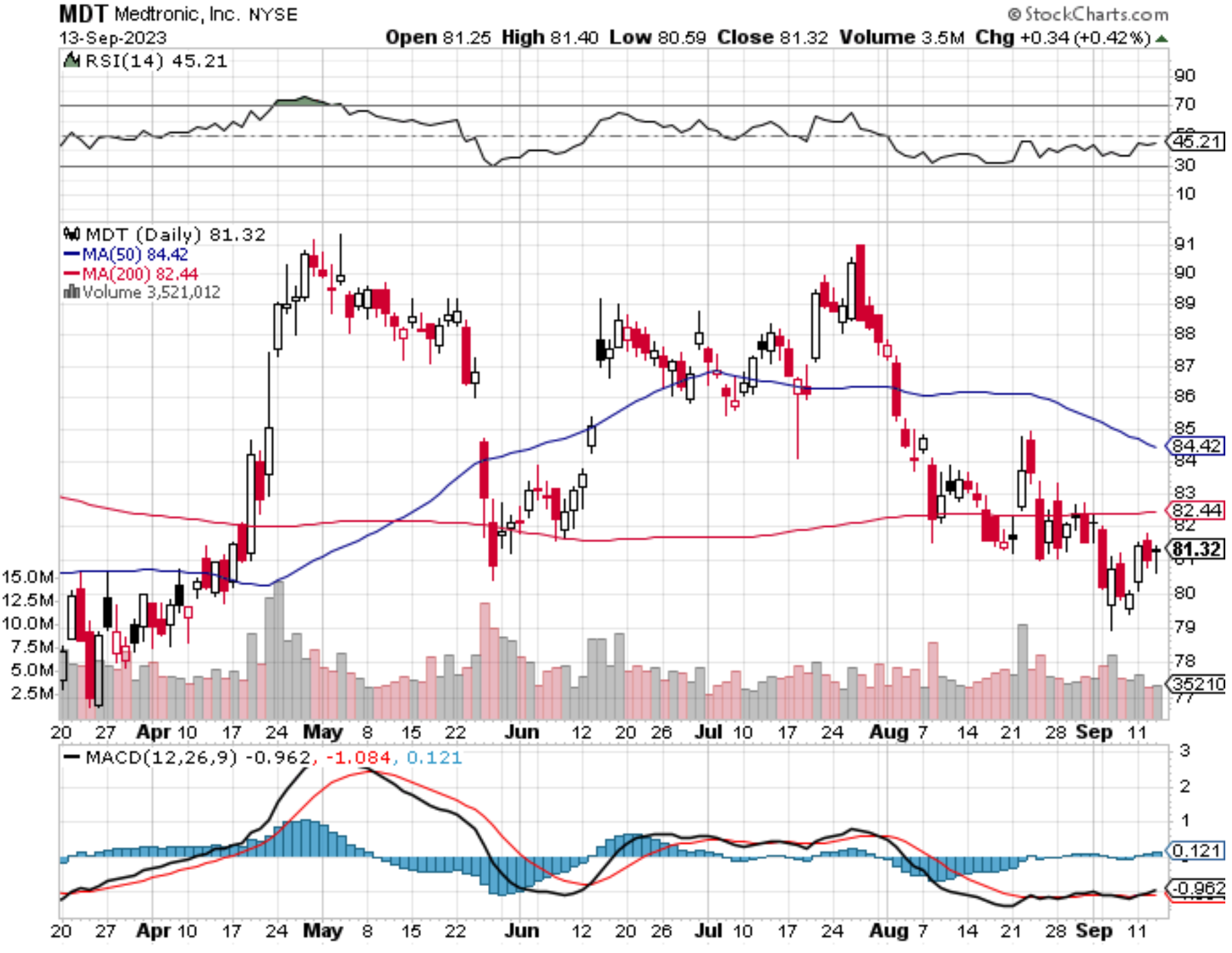
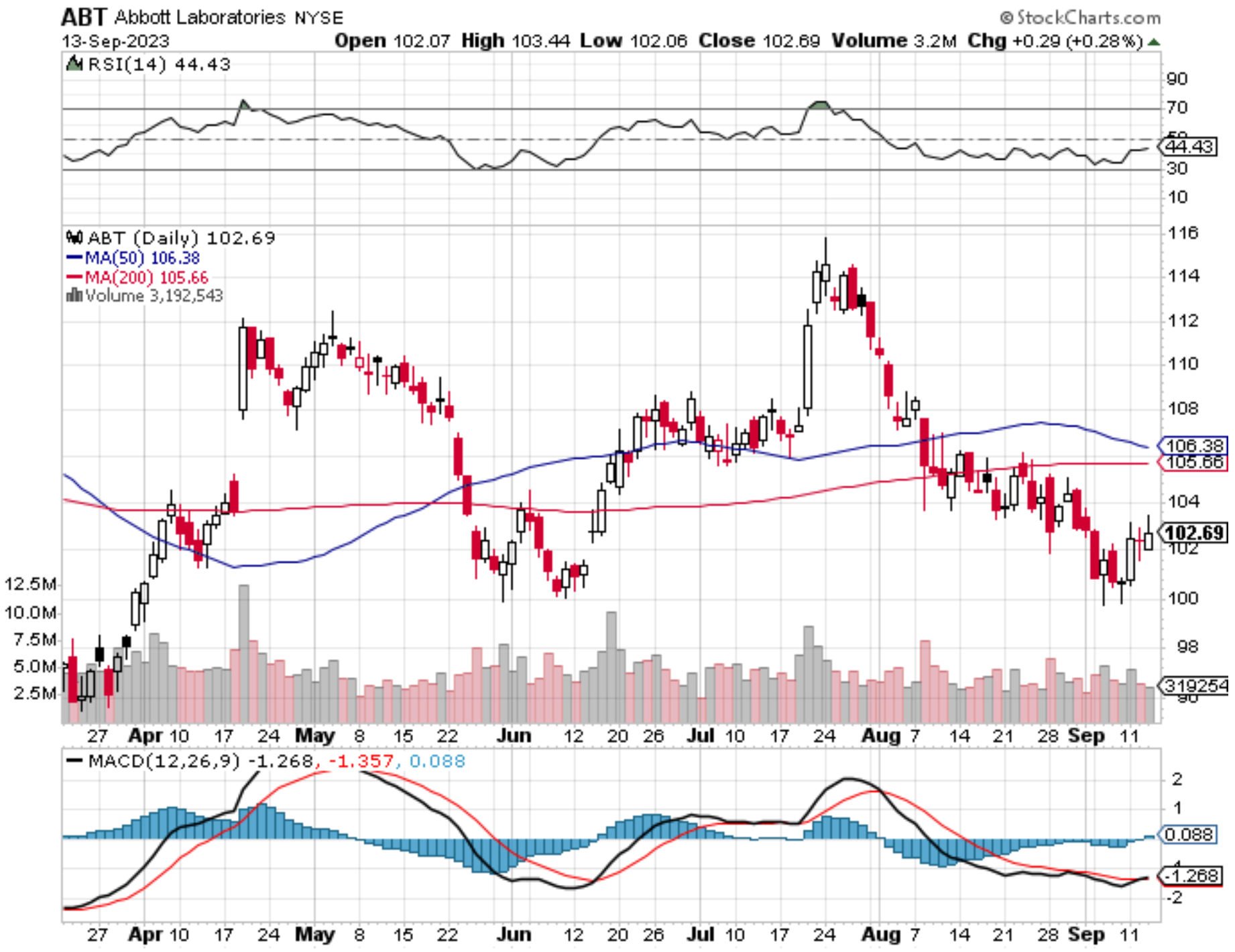
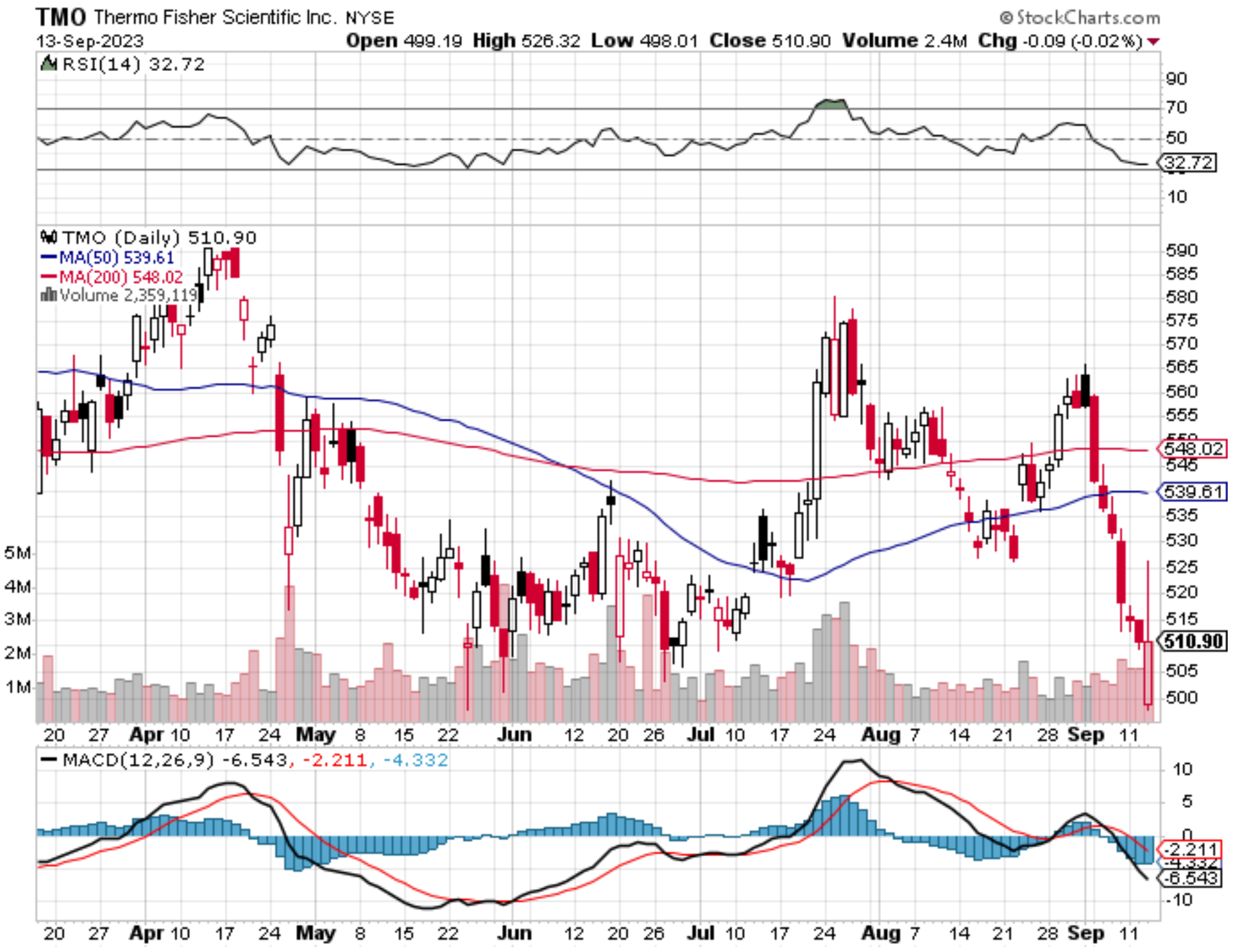
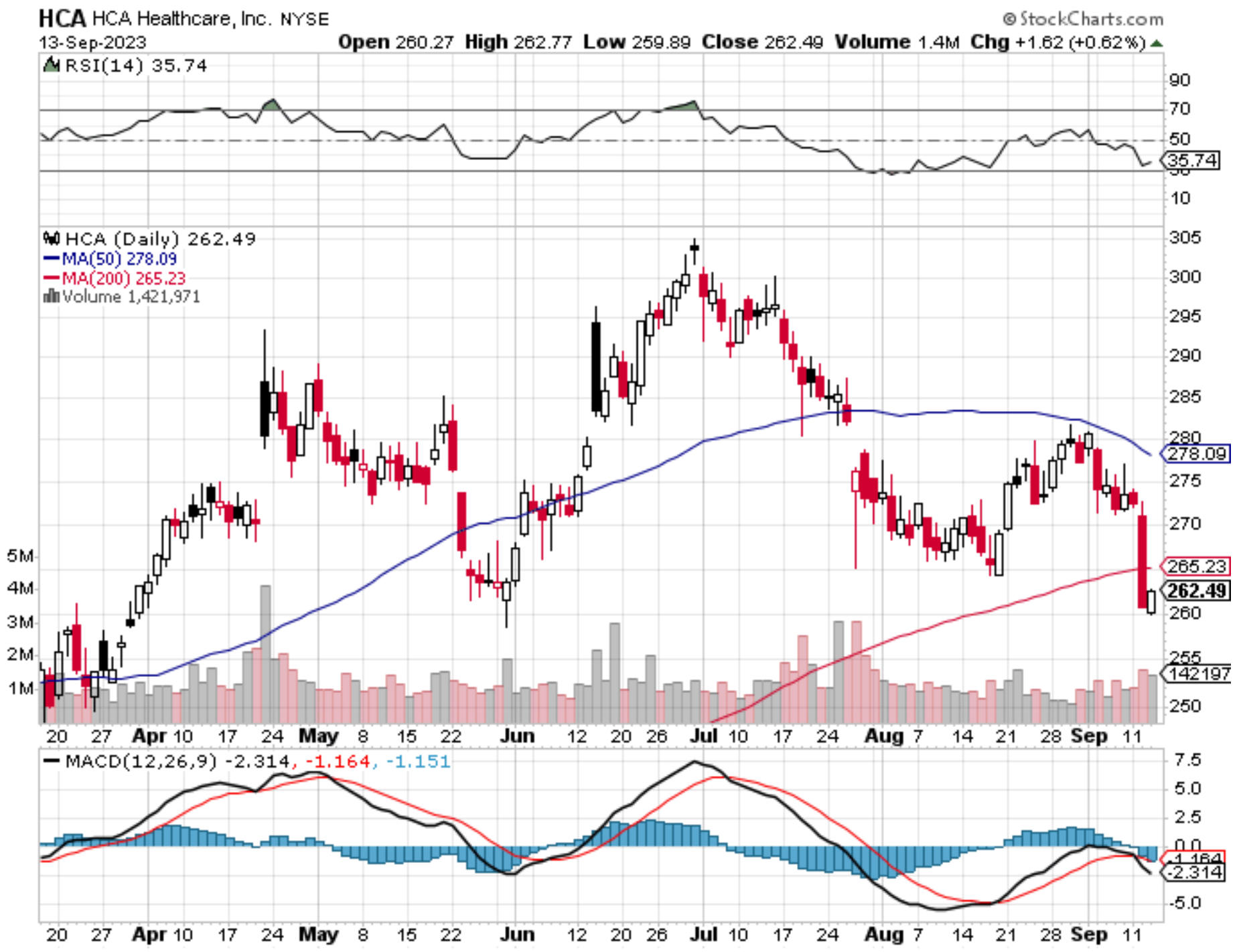
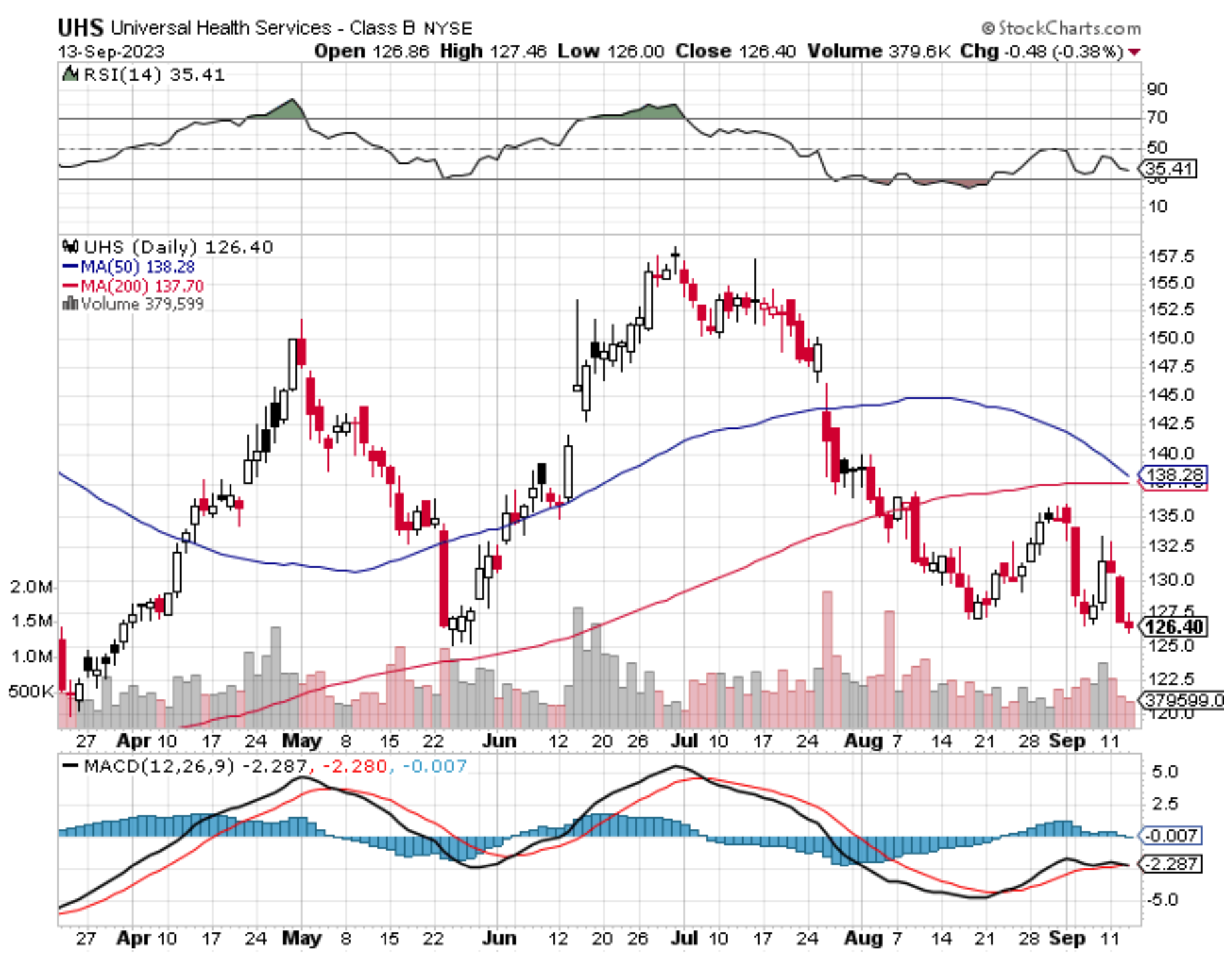
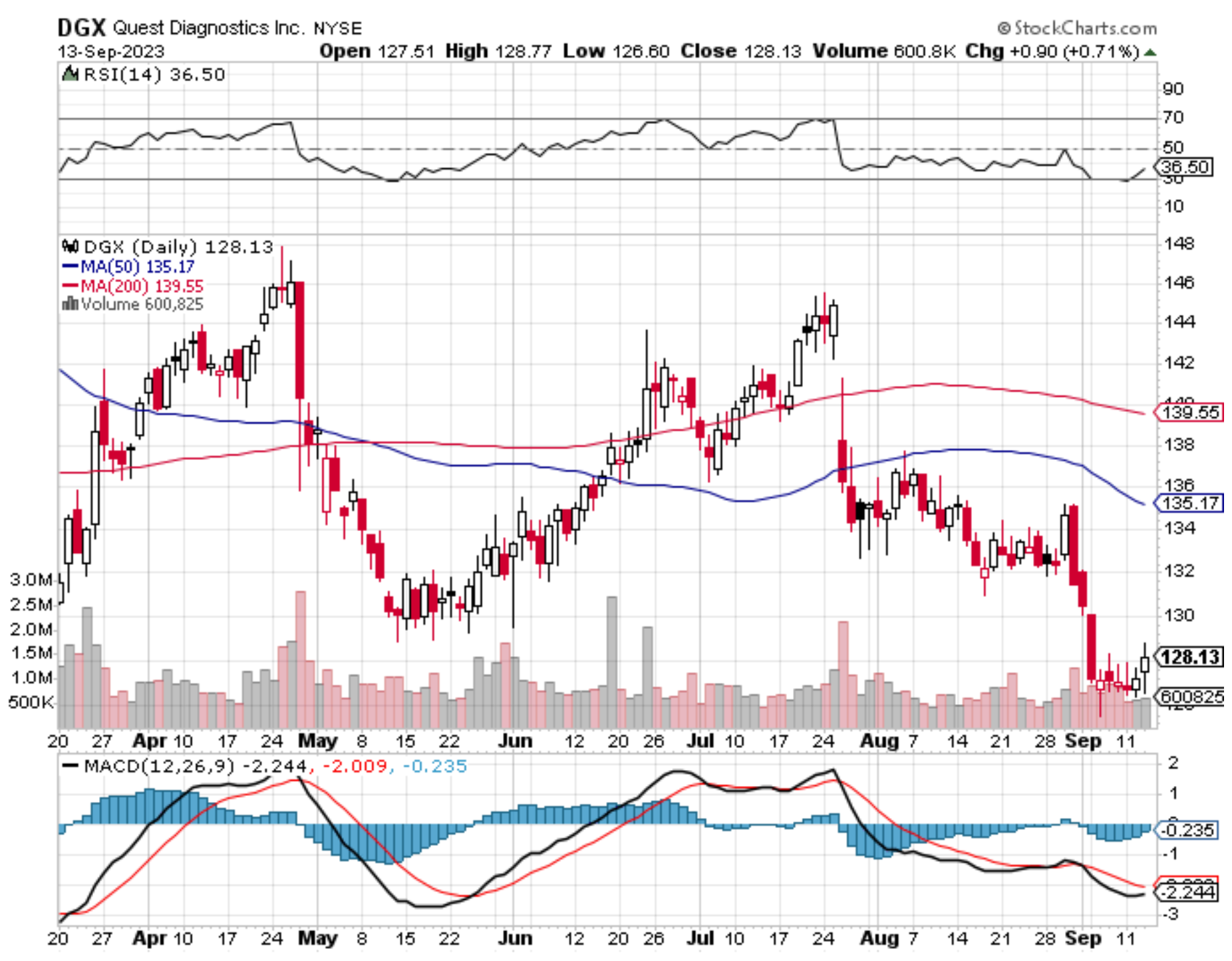
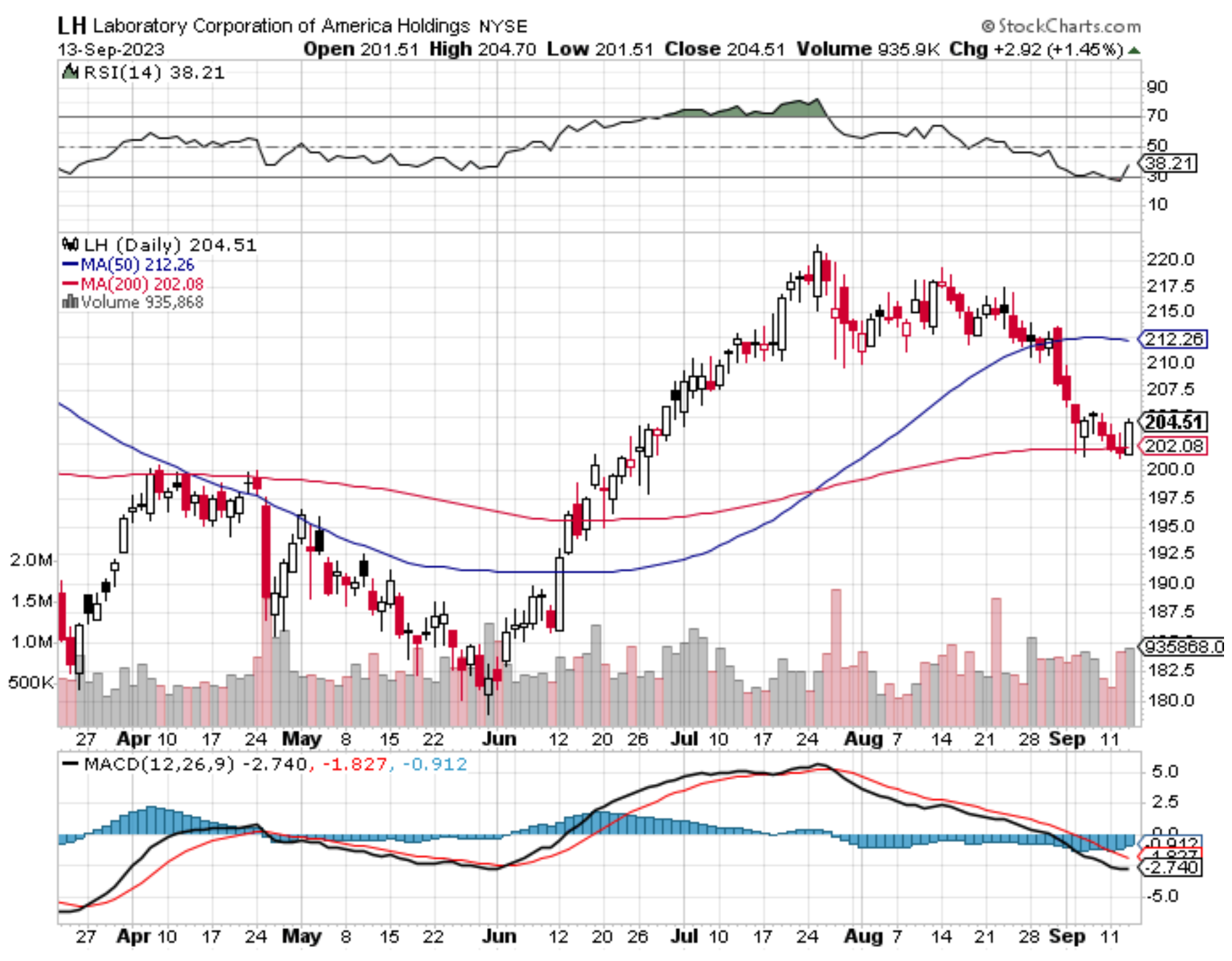
Mad Hedge Biotech and Healthcare Letter
May 2, 2023
Fiat Lux
Featured Trade:
(QUANTUM COMPUTING IN BIOTECH)
(MRNA), (IBM), (PFE), (NVS), (ILMN), (TEVA), (NVO), (RHHBY), (GOOGL)

When you think of the pioneering biotech, Moderna (MRNA), artificial intelligence (AI) and quantum computing might not be the first things that come to mind. Instead, you might associate Moderna more with its work in traditional laboratory research and as a leading coronavirus vaccine manufacturer.
However, Moderna has taken significant strides into the realm of AI. In fact, the biotech utilized AI during the early stages of developing its coronavirus vaccine and has also implemented the technology for other business purposes.
Now, Moderna is taking things a step further by partnering with International Business Machines (IBM) to explore the potential of AI and quantum computing in enhancing its messenger RNA research.
Needless to say, this innovative collaboration could potentially revolutionize the biotech industry.
To understand Moderna's recent developments in AI and quantum computing, it's important to first have a grasp of its mRNA technology.
Unlike traditional vaccine production that involves growing viruses in a lab, Moderna produces mRNA that provides the body with instructions to treat or prevent a particular illness. This innovative process is already faster than traditional vaccine production methods. But AI has played a significant role in making the process even faster.
Moderna has been able to leverage AI and automation to scale up mRNA production significantly. In fact, the company's mRNA production for experiments went from about 30 per month to 1,000 per month thanks to AI. Additionally, AI has contributed to the generation of more effective mRNA sequence designs, saving researchers considerable time.
Let's now take a closer look at the implications of Moderna's partnership with IBM.
One of the primary areas of focus is IBM's generative AI for therapeutics, which has the potential to provide Moderna researchers with a deeper understanding of molecular behavior, facilitating the development of new molecules for therapeutics.
Moreover, IBM's expertise in quantum computing could prove invaluable in speeding up the discovery of new treatments, enabling Moderna to push the boundaries of medical research and improve patient outcomes.
Quantum computing differs from traditional computing in its use of a system that allows for states beyond the binary 1s and 0s. Quantum computers can understand information as 1, 0 or something in-between, offering the potential for individual bits to be in multiple states at the same time. This characteristic may be beneficial in modeling the dynamic interactions among drugs, enzymes, cells, and proteins that are continuously changing.
The use of advanced systems in molecular modeling has been challenging for earlier generations of hardware. However, the incorporation of quantum computing could revolutionize the way biotech companies solve these complex problems.
As a starting point, Moderna will be part of IBM's enterprise accelerator program, which provides a platform for "quantum curious" companies to invest in building their expertise in emerging areas. This program gives access to IBM's network of computing systems and specialized training on the use of quantum computing for life sciences research.
As part of this collaboration, Moderna will gain access to MoLFormer, a powerful AI model that can accurately predict a molecule's properties. This tool will prove particularly valuable in Moderna's efforts to improve the lipid nanoparticles that encapsulate its mRNA treatments.
Additionally, the partnership includes investments in generative AI programs that will assist in the design of innovative mRNA-based treatments and vaccines, helping Moderna to further cement its position as a leader in the biotech industry.
IBM had previously attempted to make a name for itself in AI-powered drug discovery, offering services through its Watson platform.
However, these offerings were ultimately discontinued in 2019. Despite once partnering with major names in cancer research such as Pfizer (PFE), Novartis (NVS), Illumina (ILMN), as well as Teva (TEVA) for drug repurposing, IBM has shifted its focus to other areas of the life sciences industry.
As quantum computing technology continues to evolve, however, its potential applications have begun to attract some of the biggest names in biotech.
Companies like Novo Nordisk (NVO), Roche (RHHBY), and Boehringer Ingelheim have partnered with industry giants like Google (GOOGL) to explore the possibilities of this cutting-edge field, which is quickly moving from the realm of science fiction into a scientific reality.
As for the question of whether these moves can be a game-changer for Moderna, the answer is likely yes.
Moderna has already experienced significant benefits from AI in its processes, both in and out of the lab. With access to IBM's platforms, there is potential for further improvements in the company's research and development of new treatments and vaccines.
Efficiency, speed, and precision are crucial factors in drug and vaccine development, and any improvement in these areas could have a significant impact on Moderna's success. Although the results of the IBM partnership may not be immediately visible, Moderna's investments in AI and quantum computing could pay off in the long run.
With continuous innovation and portfolio expansion, Moderna is well-positioned to capitalize on market opportunities presented by mRNA technology and achieve substantial revenue growth in the years ahead.
Therefore, investors should not be overly concerned about short-term stock price fluctuations or declines in revenue from coronavirus vaccines. After all, Moderna has a robust pipeline and has demonstrated significant potential with promising clinical trial results.
Hence, investors should consider Moderna as a long-term investment opportunity, making it a valuable addition to any investment portfolio.

Mad Hedge Biotech and Healthcare Letter
February 23, 2023
Fiat Lux
Featured Trade:
(BATTLE FOR GENE THERAPY SUPREMACY)
(CRSP), (NVS), (BIIB), (BLUE), (VYGR), (GBIO), (SIOX), (NTLA), (EDIT), (VRTX), (PRIME), (BEAM)

Gene therapy is arguably one of the most fascinating and revolutionary fields in the healthcare and biotechnology industry.
A significant reason for the excitement behind gene therapy is that it provides the possibility of “functional cures,” such as “one-and-done treatments,” for patients. It’s also why these therapies are some of the most costly on the market.
For example, Zolgensma from Novartis (NVS), which focuses on treating spinal muscular atrophy in infants, has a whopping $2 million-plus price tag. Despite that, it’s considered the best option.
For context, its counterpart, Spinraza from Biogen (BIIB), costs roughly $750,000 in the first year of treatment. Unlike Zolgensma, Spinraza needs to be administered four times each year. After the first treatment, patients would need to pay $350,000 per annum. By the fifth year, Spinraza has surpassed the treatment cost of Zolgensma.
Despite its incredible potential, gene therapy is one of the riskiest bets.
Take Bluebird Bio (BLUE) into consideration. This biotech has won not only one but two regulatory approvals for its innovative gene therapies. One is for Skysona, which targets a rare cerebral condition called adrenoleukodystrophy; the other, Zynteglo, is for the blood disorder beta-thalassemia. Unfortunately, this biotech’s price has slid by more than 90% in the past five years.
Working on gene therapies is filled with complicated and challenging obstacles. Most companies in this segment ended up burning through their cash without successfully launching a marketable product. Some examples of these are Voyager Therapeutics (VYGR), Generation Bio (GBIO), and Sio Gene Therapies (SIOX).
However, there is a field in the gene therapy world that has substantially rewarded investors: CRISPR gene editing.
CRISPR means Clustered, Regularly Interspaced Short Palindromic Repeats, which was discovered by Jenifer Doudna and Emannualle Charpentier. Their discovery won the Nobel Prize for Chemistry in 2020.
Basically, CRISPR is utilized by bacteria to recognize genetic sequences that belong to dangerous or harmful viruses and cleave them via specialized enzymes like CAS-9. Eventually, Doudna and Charpentier discovered that the system could be modified to target and remove, destroy, or even edit damaging genetic sequences in human beings.
This discovery gave birth to many biotech companies. Intellia Therapeutics (NTLA) was the brainchild of Doudna, while Charpentier co-founded CRISPR Therapeutics (CRSP).
Over the past five years, NTLA's share price has risen by 146% while CRISPR skyrocketed by 210%. In comparison, the S&P 500 recorded a 53% gain within the same timeframe.
Given the volatility of the field and market volatility, other CRISPR-centered companies failed to replicate this success.
The share price of Editas Medicine (EDIT) fell by 55% over the past five years. Caribou Biosciences (CRBU) also failed to ride the momentum and slid by 44%.
Still, there are positive updates amid the struggles of the sector.
The latest news is from CRISPR Therapeutics, which expects several catalysts in 2023 thanks to its promising pipeline of candidates and clinical trials. So far, one of the most anticipated catalysts is its biologics license application for its sickle cell disease candidate, which the company aims to file by March 2023.
CRISPR Therapeutics developed this candidate, called exa-cel, alongside Vertex Pharmaceuticals (VRTX). It would be the first-ever Crispr-based therapy to edit or rewrite faulty genes if approved. Based on the company’s data, patients who underwent this one-time treatment have continued to be free of sickle cell disease symptoms.
Every year, 100,000 patients in the US are reported to suffer from sickle cell disease. Many companies have offered treatments for this condition for years but no cure. Hence, CRISPR and Vertex’s one-and-done therapy has received a fast-tracked designation. Consequently, this would give the developers sought-after market exclusivity.
As anticipated, CRISPR Therapeutics’ competitors are hot on its heels with sickle cell disease treatments of their own. To date, Prime Medicine (PRME), Beam Therapeutics (BEAM), Editas, and Intellia have candidates queued for clinical trials.
Overall, the gene editing sector continues to be an exciting and interesting field. Investors looking to take part of the action in this segment should consider buying and holding CRISPR Therapeutics stock for at least five years because the company has a reasonable chance of becoming the most dominant name in the business soon.
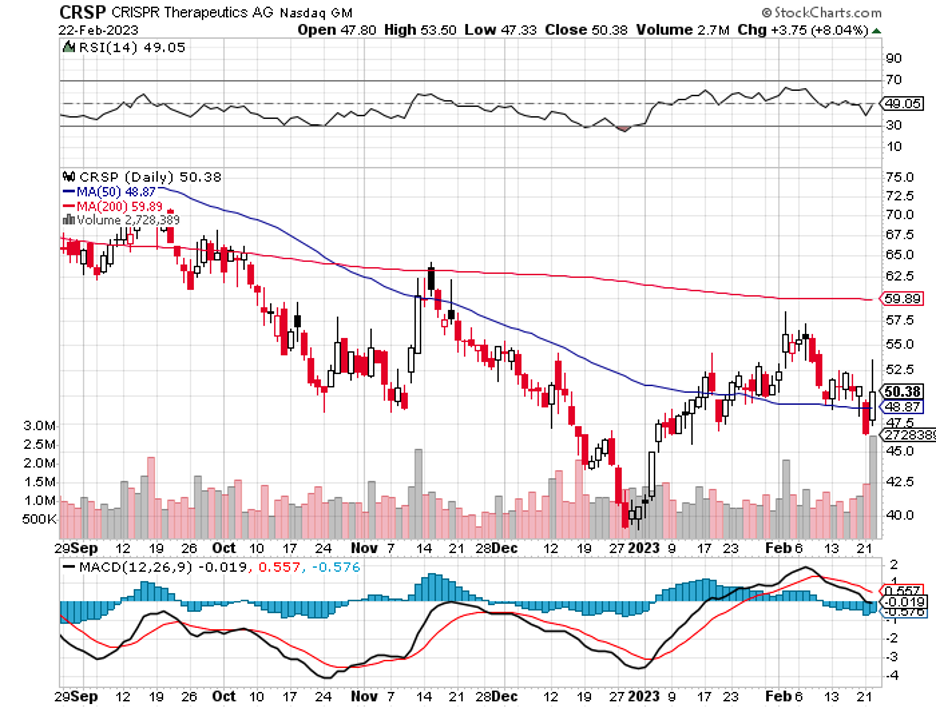
Legal Disclaimer
There is a very high degree of risk involved in trading. Past results are not indicative of future returns. MadHedgeFundTrader.com and all individuals affiliated with this site assume no responsibilities for your trading and investment results. The indicators, strategies, columns, articles and all other features are for educational purposes only and should not be construed as investment advice. Information for futures trading observations are obtained from sources believed to be reliable, but we do not warrant its completeness or accuracy, or warrant any results from the use of the information. Your use of the trading observations is entirely at your own risk and it is your sole responsibility to evaluate the accuracy, completeness and usefulness of the information. You must assess the risk of any trade with your broker and make your own independent decisions regarding any securities mentioned herein. Affiliates of MadHedgeFundTrader.com may have a position or effect transactions in the securities described herein (or options thereon) and/or otherwise employ trading strategies that may be consistent or inconsistent with the provided strategies.
This site uses cookies. By continuing to browse the site, you are agreeing to our use of cookies.
OKLearn moreWe may request cookies to be set on your device. We use cookies to let us know when you visit our websites, how you interact with us, to enrich your user experience, and to customize your relationship with our website.
Click on the different category headings to find out more. You can also change some of your preferences. Note that blocking some types of cookies may impact your experience on our websites and the services we are able to offer.
These cookies are strictly necessary to provide you with services available through our website and to use some of its features.
Because these cookies are strictly necessary to deliver the website, refuseing them will have impact how our site functions. You always can block or delete cookies by changing your browser settings and force blocking all cookies on this website. But this will always prompt you to accept/refuse cookies when revisiting our site.
We fully respect if you want to refuse cookies but to avoid asking you again and again kindly allow us to store a cookie for that. You are free to opt out any time or opt in for other cookies to get a better experience. If you refuse cookies we will remove all set cookies in our domain.
We provide you with a list of stored cookies on your computer in our domain so you can check what we stored. Due to security reasons we are not able to show or modify cookies from other domains. You can check these in your browser security settings.
These cookies collect information that is used either in aggregate form to help us understand how our website is being used or how effective our marketing campaigns are, or to help us customize our website and application for you in order to enhance your experience.
If you do not want that we track your visist to our site you can disable tracking in your browser here:
We also use different external services like Google Webfonts, Google Maps, and external Video providers. Since these providers may collect personal data like your IP address we allow you to block them here. Please be aware that this might heavily reduce the functionality and appearance of our site. Changes will take effect once you reload the page.
Google Webfont Settings:
Google Map Settings:
Vimeo and Youtube video embeds:
